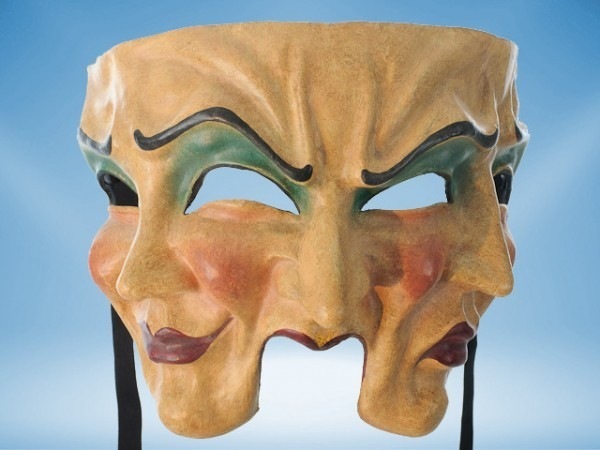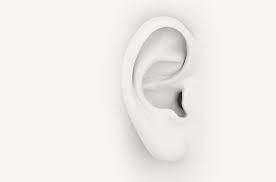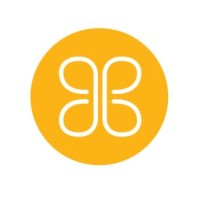Who's who in the zoo

We are all products of our nature-nurture heritage which evolves into our personal life narrative and indeed, into our unique subjectivity. Invariably we will perceive ourselves and the extended environment through subjective filters. It becomes important therefore, especially when related to a group dynamic, to be able to move into an objective space so as to achieve clarity insofar as we as individuals are concerned as well as the extended environment.
To this end I proposed a model in 1992, based on the integration of the neurosciences with the developing science of psychoneuro-immunology (PNI) – the scientific study of the mind-body connection. The model was developed in an attempt to identify and incorporate the full range of behavioral attributes based on the determinants of the nurture dynamic. Following a study of degrees of deprivation of neonatal and infant needs, three Archetypes were defined. The model, which is referred to as the Triangles Model, was completed in 2006 with the incorporation of the relevant chemical configurations associated with each Archetype. Each Archetype therefore consists of a determining nurture heritage, inherent processing traits, values, needs, beliefs and drives as well as a chemical configuration.
It became apparent that a diagnostic or psychometric was required to quantify and define the individual archetypes and thereby formulate the most appropriate intervention, if required. In addition, individuals needed to be tracked quantitatively as to the effectiveness of the intervention. As a result, the final version of an online diagnostic was rolled out in 2010.
The online Neuro-Diagnostic is programmed to comprehensively profile users in terms of their levels of personal gratification,self-esteem, self-worth, self-efficacy, purposefulness, hostility as well as potential in terms of leadership and entrepreneurship. The data supporting the Neuro-Diagnostic was derived from several thousand case studies. In effect, the Neuro-Diagnostic provides an accurate snap-shot of all prevailing drives, fears and potential limiting beliefs. The diagnostic has been validated through several Master’s degrees. The three Archetypes may be summarized as follows:
The Bravo Archetype: This Archetype evolves from a nurture dynamic of moderate deprivation. This Archetype is highly driven to achieve objectives, knowing that there will be ultimate reward for task application and achievement. One of the important drives is fear - fear of failure to achieve the objectives as well as fear of not being recognized. The Bravo Archetype is self-absorbed and judgmental (to disparaging levels), but efficient and ambitious. Issues which may arise as a result of excessive fear is the need to control as well as the inability to delegate. Since the need to appease ‘own needs’ is at the core of this archetype, they are driven by the ‘five finger rule’ – WHAT’S; IN; IT; FOR; ME! The extreme form of this archetype is the narcissistic personality.
The Charlie Archetype: This Archetype emerges from a nurture heritage of extreme deprivation. Here is found low self-esteem and low self-efficacy indices. This Archetype may incorporate the belief that they are not worthy of gratification and that they are born to serve the needs of others. In cases where the narrative incorporates elements of ‘why should I be the only one suffering’, traits of hostility and vengefulness may arise towards those who they believe are more successful and fortunate than themselves. In the same vain, this Archetype tends to blame others for their own shortcomings. The combination of low self-esteem, hostility, vengefulness and suppression may give rise to the sociopathic personality disorder or in extreme forms, to psychopathy. On the positive side, we have noted in our experience that individuals with this archetype often have talents. This is important in the context of intervention.
The Alpha Archetype: The Alpha Archetype is a product of minimal deprivation – own needs were never an issue. They are non-judgmental and sensitive to the extended environment. They are driven by task-engagement gratification rather than by the achievement of objectives alone. They also derive gratification from value contribution to their environments. From this archetype develops the visionary leaders, the entrepreneurs and the great mentors.
In practice, a continuum exists such that there are no pure Alpha’s, Bravo’s or Charlie’s. Rather, individuals generally incorporate traits from all three Archetypes but are still recognizable as occupying a defined point along the continuum. Defined Archetypes therefore include Alpha, Alpha-Bravo, Bravo, Bravo-Charlie and Charlie.
Quantification
The Neuro-Diagnostic consists of four sections:
Triangular configuration: This is a diagrammatic representation of how the individual prioritizes his/her life in regard to work, personal and recreation. Incorporated into the diagram are measures of fulfilment/gratification in the work and personal environments. Gratification that falls below a statistically significant threshold usually indicates the onset of a hopeless-helpless mind state which may impact negatively on wellness, performance and leadership.
Verve score – defining the functional Archetype: The Archetype reflects degrees of self-esteem, self-efficacy and resilience. Generally, the lower the score (tending to Bravo-Charlie or Charlie), the lower the self-esteem and purposeful motivation. This score usually reflects nurture influences.
Corporate Profile: This section provides a measure of self-worth or value contribution to the work team/unit/company. It is represented as a graph such that individuals who are at least ten percentage points above the threshold line on the Y-axis are motivated and productive. Those falling on or below the line reflect the onset of hopeless-helplessness. This may result from inappropriate placement of the individual in a specific job description and/or problematic management of the work team/unit.The entire work team/unit/division/company can be plotted on the same grid thus providing a snap-shot of the effectiveness of the group.
Leadership-entrepreneurship index: This section provides a measure of the leadership and entrepreneurship potential of the individual on a sliding scale. There are three defined areas: High end – visionary leaders; Middle – competent senior managers or directors; Low end – deficient in leadership potential.
The Neuro-Diagnostic is fully quantified. This quantification is also used to generate the mean percentage of effectiveness of the work team/unit (Corporate Efficacy Index – CEI). In this way, both the individual and the work team/unit and indeed the entire company can be quantified and tracked.
Derived from this diagnostic are four indices – GRAT (quantifying personal gratification); RES (quantifying self-esteem and resilience); WORTH (quantifying self-worth/value contribution); HOS-I (quantifying degrees of hostility). These can be generated for the individual and can also be used to generate the mean for the group. They can also be tracked for the individual and for the group thus providing valuable insight into evolving trends and challenges emerging at the workplace.
Leadership in the context of the Neuro-Triangles Model
The most effective leader is the combination of the big picture sensitivity of Alpha and the hands-on experience of Bravo – hence the Alpha-Bravo configuration. The Alpha-Bravo leader leads by inspiration and by inviting an all inclusive employee contribution to enhancing the effectiveness of the organization.
The classical Bravo-type company structure and management style is top-down prescriptive with the motto ‘my way or the highway’. It is non-inclusive of lower levels of the employment structure and looks down upon input from employees at lower levels. Tenure and promotion therefore favours the Bravo Archetype.
The Charlie Archetype may emerge, through manipulation, into a position of authority. Owing to their low levels of self-esteem, they function by surrounding themselves with able-bodied Bravo’s and hold them to ransom. It is this ‘rosette’ which then leads prescriptively in a top-down manner. In this organization there will be a great deal of fear and insecurity.
Archetypal Challenges within the Work Team
Bravo is driven by fear of failure and hence needs to control and is averse to delegating. Bravo is also self-absorbed – driven by the five finger rule: What’s; in; it; for; me! Consequently Bravo is not a great team player. In a work team under pressure, Bravo will be intolerant of Charlie’s inadequacies and will judge and attempt to control the apparent relaxed attitude of the Alpha type. Invariably Alpha, who is self-assured and connected to the bigger picture, always manages to deliver on time, even managing to ‘smell the roses’ along the way!
As a result of constant harassment of Charlie by Bravo, the Charlie self-esteem and self-efficacy may deteriorate and result in compromised performance and increased absenteeism. Invariably it is the Alpha-Bravo or high scoring Bravo that modulates the fear of Bravo through reassurance. Charlie is invited to participate, Bravo is encouraged to delegate (in controlled amounts initially) and the language slowly changed from judgmental aggression to non-judgmental, sensitive inclusiveness. Mediation/facilitation however may need to be more formalized through the manager or coach.
In the event that the Charlie Archetype incorporates traits of hostility, more complicated challenges arise and consequently this is best managed by an external coach/facilitator.
And so we’ve arrived at a point of sufficient clarity to understand individuals and the dynamics of interacting groups of individuals such that interventions become appropriately tailored to the landscape. In addition, we are able to track the effectiveness of intervention in regard to the individual, the work-unit and indeed the entire company. Today I’m involved with teaching, coaching and profiling in the personal, clinical and corporate spaces. I also train coaches in the use of the diagnostic so that they become proficient and accredited in the use of this powerful psychometric. In its essence, the program has become a platform which has enabled us to transcend subjectivity and thereby create a powerful means to enhance wellness, performance and leadership.
The program is made available world-wide in the form of workshops as well as in the form of a comprehensive online distant learning application. See www.neuronostic.com or contact nsurge2@gmail.com
"
Articles from Ian Weinberg
View blog
We are, each one of us, the products of our nurture environments and the narrative which followed th ...

One of the most important clinical paradigm shifts in our time has been the realization that neuroch ...

In this age of multiple human issues which have been so generously aired on the social media platfor ...
Related professionals
You may be interested in these jobs
-

SENIOR HR OFFICER
Found in: Job Placements ZA C2 - 1 day ago
HR Genie Langebaan, South AfricaSENIOR HR OFFICER | PEOPLE OPERATIONS SPECIALIST V&A Waterfront, Cape Town · R30 000 R35 000 Per Month Plus Pension Benefit depending on qualification and years of relevant experience · Our client, a growing online travel business is currently expanding · The People Operations Sp ...
-

Truck Sales Executive-Isuzu Trucks Tommy Martin Eagle Canyon
Found in: beBee S2 ZA - 1 day ago
Jobking Johannesburg, South Africa Full timeEnergetic individual with a passion for a sales career who is able to operate within a team. · The successful candidate will be driven to achieve volume, gross profit and customer satisfaction targets as set by the dealership and manufacturer. · Must be sales prospecting activity ...
-

New Business Consultant
Found in: Talent ZA C2 - 5 days ago
Pillango Placements Randburg, South AfricaYou will be instrumental in identifying, developing, and securing new business opportunities within the large corporate sector. This role involves strategic outreach, high-level negotiations, and presenting payment solutions to key decision-makers. The successful candidate will h ...

Comments
Ian Weinberg
6 years ago #15
Bingo! That's it. It is indeed the sociopath, but I've arrived at the profile referred to in my narration, based on an analysis of the diagnostic. As you're aware the cunning sociopath can be notoriously difficult to identify/recognize - except by the astute and the trained. Through studying the profiles of all those in a defined group we can begin to identify the prevailing dynamic viz the core Bravo support and the rest.
Phil Friedman
6 years ago #14
Allow me to play Devil's Advocate for a moment. And please understand I do so because I am interested to understand. How does the B-C jerk you've described, even the description itself, differ from what we, in our simple-mindedness, used to cal a freakin' sociopath.?
Phil Friedman
6 years ago #13
Allow me to play Devil's Advocate for a moment. And please understand I do so because I am interested to understand. How does the B-C jerk you've described, even the description itself, differ from what we, in our simple-mindedness, used to cal a freakin' sociopath.?
Ian Weinberg
6 years ago #12
Here's a real juicy case study for you Phil Friedman: Joe Soap is a low scorer - Bravo-Charlie, implying nurture deprivation and low self-esteem. Joe appears to be gratified in his work environment. In order to satisfy leadership-type recognition needs in the face of a low self-esteem, Joe has had to surround himself with confident, contributing Bravo types. Joe holds on to them by repeatedly admiring them and/or praising and rewarding them. This collective leadership entity then attracts others that have need for contributing and thereby deriving recognition, reward and the feel-good warm fuzzy. But the diagnostic has thrown up an additional dark figure - Joe has a high hostility index. We know therefore that in his nurture period Joe must have arrived at a point where he asked " why should I be the only one to suffer?" From the data-base we know that Joe has actually suppressed his emotions and that both the Bravo's of the inner core as well as the extended collective are being used and manipulated for Joe's needs. Once of no further value, they will be cut loose (or in certain cases, destroyed. Also passive aggressive behavior) - they have no intrinsic value as far as Joe is concerned. Relationships devoid of authenticity.
Ian Weinberg
6 years ago #11
Part 1: I wish it were as elaborate as that Phil Friedman But no, its far more basic. At the outset, after integrating the neuroscience with the evolving study of PNI, I set out to define recognizable archetypes based on nurture history, processing styles, subjective beliefs and drives and then finally, chemical configurations. This was initially based on a review of our own case studies as well as prevailing literature. Thereafter I formulated the online diagnostic with 80 or so questions and appropriate weighting. These needed to be tweaked with the increasing number of cases, until we were reading and profiling accurately. At this point, 3 of my accredited coaches each did their Master's in a different facet of testing and profiling (statistical analyses) - a comparison of archetype profiles with other existing psychometrics (meta-programs and processing styles); archetype correlation with illness occurrence; archetype profiling with effective leadership.
Ian Weinberg
6 years ago #10
Part 2: Today the client does the diagnostic so that we can do the profiling which forms the basis for intervention. The comprehensive profile is a snapshot of multiple facets of the individual’s subjectivity. We then either engage the individual in the context of a workshop or in a personal one-on-one basis. The initial approach is purely educational – create an awareness and understanding of the archetypes – their derivation, fears, aspirations, strengths&weaknesses, limiting beliefs. Then based on the understanding derived from our data-base we map the profile in the inter-personal space, corporate space and leadership space. Finally we invite the individual to perform a cross-walk with their own experiences and life path. Only once this is all established, do we embark on an intervention program if appropriate and if the individual requests it. The process oscillates continually between subjectivity and the objectivity derived from the data-base and our understanding of it. Hopefully that gives you a better idea of the application.
Phil Friedman
6 years ago #9
Okay, Ian, if I understand you, one objective is to create an archetypal framework using which the "subject" assigns value(s) to him- or herself. And that by comparing those with the values others assign for the SAME subject, we can see if (when) we are operating in "objective" space. Somewhat like dealing with the "objectivity" of color perception? You and I may not see, for example, red in precisely the same way at the physical level, but if our color identifications consistently coincide, then the framework within which we're operating "transcends subjectivity"? Am I even close?
Ian Weinberg
6 years ago #8
Dear Phil Friedman your sublime comment has inspired me to a state of uncontrollable buzziness! My eyes shimmer and blurr with the value that you have created. Regarding the creation of a platform to transcend subjectivity - the nature of the program is to define the Archetypes and their combinations generically at the outset. Only then do we apply the data to specific individuals. The diagnostic itself uses the self-reported info to generate the Archetypes (self-reporting obviously the weak link as in all self-reported stuff, although for the most part the info has been authentic). By educating the individual in the objective derivation of the Archetypes we aspire to hold them briefly in an objective space from the outside looking in before they spontaneously flip back into subjectivity. It's that small, brief 'gap' that we exploit in the intervention to attempt sustained subjective change. As regards your Archetype, if this stuff tweaks you we can chat about mine and yours in the PM route. Have a great week. Hope Florida is well on track towards restoration.
Phil Friedman
6 years ago #7
Debasish Majumder
6 years ago #6
Ian Weinberg
6 years ago #5
Ian Weinberg
6 years ago #4
Ken Boddie you nailed it good and solid, mate. Thanks for the link, I'll check it out.
Ken Boddie
6 years ago #3
Joyce 🐝 Bowen Brand Ambassador @ beBee
6 years ago #2
Pascal Derrien
6 years ago #1